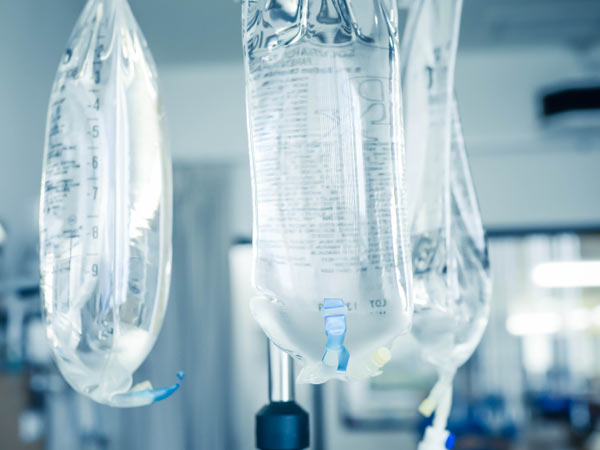What are the symptoms of rhabdomyolysis?
Rhabdomyolysis is a serious condition where muscle tissue breaks down and releases its contents into the bloodstream, which can lead to kidney damage and other complications. The symptoms of rhabdomyolysis can vary but commonly include:
- Muscle Pain and Weakness: Often in the shoulders, thighs, or lower back, with affected muscles feeling sore and weak.
- Dark Urine: Urine may appear dark brown or reddish, sometimes resembling “tea-colored” urine, due to the presence of myoglobin, a muscle protein.
- Swelling: Swelling of the affected muscles may occur.
- Fatigue: General tiredness or a feeling of extreme fatigue.
- Nausea and Vomiting: Gastrointestinal symptoms such as nausea or vomiting.
- Fever: Occasionally, a mild fever may be present.
- Confusion or Altered Mental Status: In severe cases, confusion, dizziness, or changes in mental status can occur.
- Increased Heart Rate: Rapid heart rate or palpitations may be noted.
- Abnormal Laboratory Results: Elevated levels of creatine kinase (CK), myoglobin, and other muscle enzymes in blood tests.
These symptoms can develop rapidly, and if rhabdomyolysis is suspected, it’s important to seek medical attention promptly to manage the condition and prevent complications.
What are the causes of rhabdomyolysis?
Rhabdomyolysis can be caused by various factors, including:
- Trauma or Injury: Severe muscle injury from accidents, falls, or crush injuries can lead to rhabdomyolysis.
- Intense Physical Activity: Overexertion or prolonged exercise, especially in individuals who are unaccustomed to strenuous activity, can cause muscle breakdown.
- Medications and Drugs: Certain medications, such as statins and other muscle-toxic drugs, as well as illicit drugs like cocaine or amphetamines, can contribute to rhabdomyolysis.
- Infections: Severe infections, including viral or bacterial infections, can trigger muscle damage.
- Metabolic Disorders: Conditions like metabolic myopathies or inherited disorders affecting muscle metabolism can lead to rhabdomyolysis.
- Heat Stroke: Extreme heat exposure leading to heat stroke can cause muscle breakdown.
- Dehydration: Severe dehydration, often compounded by intense exercise or illness, can increase the risk of rhabdomyolysis.
- Electrical Burns: Electrical injuries can cause severe muscle damage and rhabdomyolysis.
- Autoimmune Diseases: Conditions like polymyositis or dermatomyositis, where the immune system attacks muscle tissue, can lead to muscle breakdown.
- Alcohol or Substance Abuse: Chronic alcohol use or substance abuse can contribute to muscle damage and rhabdomyolysis.
- Genetic Factors: Certain genetic conditions affecting muscle function can predispose individuals to rhabdomyolysis.
Identifying and addressing the underlying cause is crucial for effective treatment and management of rhabdomyolysis.
What is the treatment for rhabdomyolysis?
The treatment for rhabdomyolysis focuses on addressing the underlying cause, managing symptoms, and preventing complications. Key aspects of treatment include:
- Hydration: Intravenous (IV) fluids are administered to help flush myoglobin and other toxins out of the kidneys, which is crucial for preventing kidney damage. Maintaining adequate fluid intake helps dilute the urine and reduce the concentration of harmful substances.
- Electrolyte Management: Monitoring and correcting electrolyte imbalances, such as high potassium (hyperkalemia) and low calcium (hypocalcemia), is important. Electrolyte abnormalities can be managed with medications and IV solutions.
- Medications: Pain relief and anti-inflammatory medications may be used to manage muscle pain and inflammation. Additionally, medications that address specific complications, such as diuretics, may be employed to enhance urine output and prevent kidney damage.
- Treatment of Underlying Causes: Identifying and treating the underlying cause of rhabdomyolysis, such as discontinuing a problematic medication, managing a chronic condition, or addressing severe trauma, is crucial.
- Monitoring: Close monitoring of kidney function through blood tests, such as serum creatinine and blood urea nitrogen (BUN) levels, is essential to assess the impact of rhabdomyolysis and adjust treatment as needed.
- Dialysis: In severe cases where kidney function is significantly impaired, dialysis may be necessary to remove waste products from the blood and support kidney function.
- Rest and Rehabilitation: Resting affected muscles and gradually reintroducing physical activity under medical guidance can help with recovery and prevent further muscle damage.
Early detection and treatment are vital for preventing complications and improving outcomes in individuals with rhabdomyolysis.

Leave a Reply
You must be logged in to post a comment.